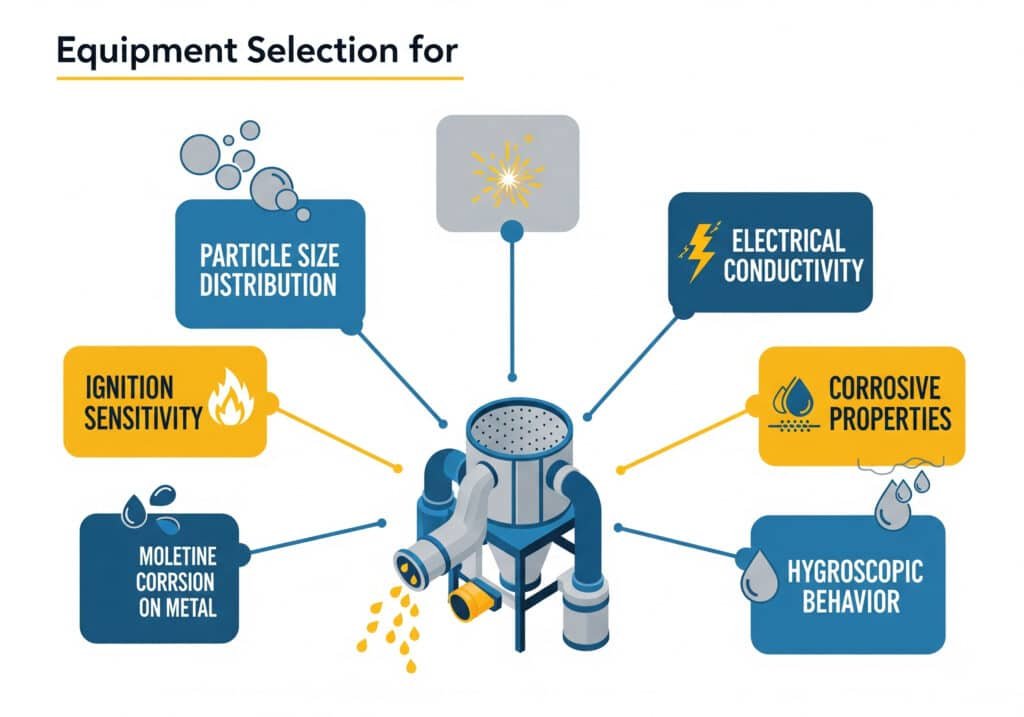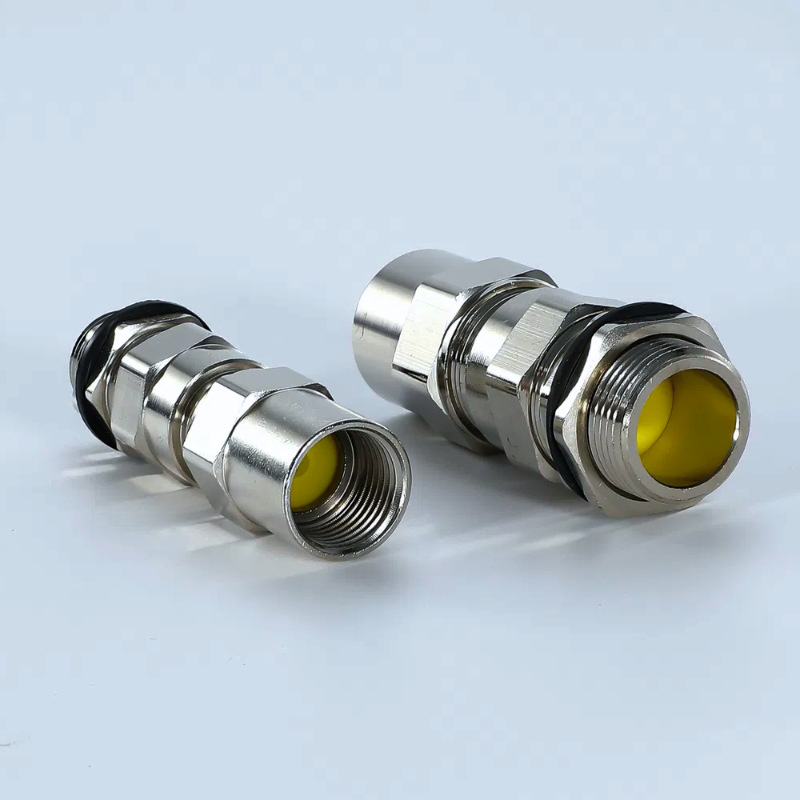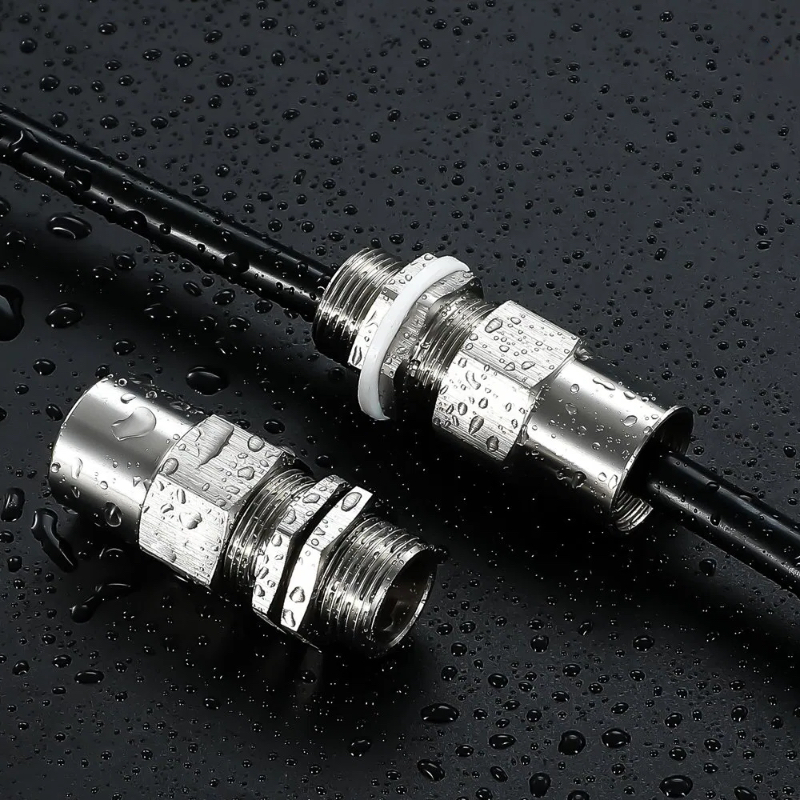Dust explosions kill 100+ workers annually worldwide. Proper cable gland selection for explosive dust atmospheres can prevent these tragedies and protect your facility from devastating damage.
Cable gland selection for explosive dust atmospheres requires ATEX certification1 for appropriate zones (20, 21, 22), proper ingress protection ratings (IP6X minimum), temperature class compatibility, dust ignition temperature considerations, and compliance with EN 60079-31 for dust-tight enclosure requirements.
Last month, Hassan called me urgently from his grain processing facility. They had a near-miss incident where accumulated dust around improperly rated cable glands created a potential ignition source. The investigation revealed their existing glands weren’t ATEX-certified for dust atmospheres. This incident reminded me why proper selection is literally a matter of life and death.
Table of Contents
- What Are the Essential Requirements for Cable Glands in Dust Explosion Zones?
- How Do You Determine the Correct ATEX Category and Zone Classification?
- What Are the Key Technical Specifications for Dust-Tight Cable Glands?
- How Do You Select Cable Glands for Different Types of Combustible Dust?
What Are the Essential Requirements for Cable Glands in Dust Explosion Zones?
Cable glands in potentially explosive dust atmospheres must meet stringent ATEX requirements that go beyond standard industrial applications. Understanding these requirements prevents catastrophic failures.
Essential requirements include ATEX certification per Directive 2014/34/EU, compliance with EN 60079-312 for dust-tight enclosures, appropriate equipment category (1D, 2D, 3D), temperature class compatibility with dust ignition temperatures, and proper ingress protection rating (IP6X minimum) to prevent dust accumulation.
ATEX Directive Requirements
Equipment Categories for Dust Atmospheres:
- Category 1D: Zone 20 – Very high level of protection
- Category 2D: Zone 21 – High level of protection
- Category 3D: Zone 22 – Normal level of protection
Essential Safety Requirements:
- Prevention of ignition sources
- Limitation of surface temperatures
- Protection against electrostatic discharge3
- Mechanical impact resistance
- Environmental protection against dust ingress
EN 60079-31 Compliance
Dust-Tight Enclosure Requirements:
- IP6X rating: Complete protection against dust ingress
- Pressure test: 2 kPa overpressure for 10 seconds
- Temperature monitoring: Surface temperature limitations
- Mechanical strength: Impact and vibration resistance
David recently told me: “Chuck, your explanation of EN 60079-31 requirements helped us understand why our standard IP65 glands weren’t sufficient for our flour mill application.”
Temperature Classification System
Temperature Classes for Dust:
- T1: ≤ 450°C surface temperature
- T2: ≤ 300°C surface temperature
- T3: ≤ 200°C surface temperature
- T4: ≤ 135°C surface temperature
- T5: ≤ 100°C surface temperature
- T6: ≤ 85°C surface temperature
Dust Ignition Temperature Examples:
| Material | Cloud Ignition | Layer Ignition | Required Class |
|---|---|---|---|
| Wheat flour | 380°C | 220°C | T2 |
| Coal dust | 610°C | 170°C | T3 |
| Aluminum powder | 590°C | 400°C | T1 |
| Sugar | 370°C | 350°C | T2 |
| Wood dust | 430°C | 250°C | T2 |
Certification and Marking Requirements
ATEX Marking Format:
- CE marking with notified body number
- Ex symbol and protection concept
- Equipment category and zone suitability
- Temperature class designation
- Certificate number reference
Example Marking:CE 0102 ⚡ II 2D Ex tb IIIC T135°C Db IP66
Interpretation:
- CE 0102: Notified body certification
- II 2D: Category 2D equipment for Zone 21
- Ex tb IIIC: Protection by enclosure for combustible dust
- T135°C: Maximum surface temperature
- Db: Dust protection level
- IP66: Ingress protection rating
At Bepto, we maintain comprehensive ATEX certifications for all dust atmosphere applications. Our technical team provides detailed application guidance to ensure proper selection. 😉
How Do You Determine the Correct ATEX Category and Zone Classification?
Proper zone classification is fundamental to selecting appropriate cable glands. Misclassification can lead to inadequate protection and potential explosion risks.
Zone classification requires hazard assessment of dust release probability, dust accumulation patterns, ventilation effectiveness, and operational procedures to determine if areas qualify as Zone 20 (continuous presence), Zone 21 (occasional presence), or Zone 22 (abnormal conditions only).

Dust Explosion Zone Definitions
Zone 20 – Category 1D Required:
- Explosive dust atmosphere present continuously
- More than 1000 hours per year
- Inside equipment handling combustible dust
- Requires highest level of protection
Zone 21 – Category 2D Required:
- Explosive dust atmosphere likely during normal operation
- 10-1000 hours per year
- Near dust handling equipment
- Requires high level of protection
Zone 22 – Category 3D Required:
- Explosive dust atmosphere unlikely during normal operation
- Less than 10 hours per year
- Remote from dust sources with good ventilation
- Requires normal level of protection
Zone Classification Methodology
Step 1: Dust Release Assessment
- Continuous release: Equipment internals, transfer points
- Primary release: Normal operational dust emissions
- Secondary release: Abnormal conditions only
Step 2: Ventilation Analysis
- Natural ventilation: Outdoor or well-ventilated areas
- Artificial ventilation: Mechanical systems with monitoring
- Poor ventilation: Enclosed spaces with limited air movement
Step 3: Accumulation Evaluation
- Dust layer thickness: >5mm creates explosion risk
- Cleaning frequency: Regular removal reduces risk
- Surface characteristics: Horizontal surfaces accumulate more dust
Hassan shared: “Your zone classification methodology helped us properly assess our grain elevator. We discovered several areas were incorrectly classified.”
Common Classification Mistakes
Over-Classification Errors:
- Classifying all areas near dust handling as Zone 21
- Ignoring effectiveness of ventilation systems
- Not considering actual operational dust levels
- Applying overly conservative safety factors
Under-Classification Errors:
- Underestimating dust accumulation rates
- Ignoring secondary dust clouds from cleaning
- Not considering equipment malfunction scenarios
- Inadequate assessment of ventilation failure impacts
Documentation Requirements
Zone Classification Documentation:
- Hazard assessment methodology
- Dust release source identification
- Ventilation system analysis
- Zone boundary drawings
- Equipment selection justification
- Periodic review and update procedures
Competent Person Requirements:
- Qualified explosion protection specialist
- Understanding of process and equipment
- Knowledge of relevant standards and regulations
- Experience with similar applications
- Ongoing training and certification maintenance
What Are the Key Technical Specifications for Dust-Tight Cable Glands?
Dust-tight cable glands require specific design features and performance characteristics that differ significantly from standard gas-tight or general industrial applications.
Key specifications include IP6X dust-tight rating per IEC 60529, compliance with EN 60079-31 pressure test requirements, temperature derating for dust layer accumulation, mechanical strength for industrial environments, and proper sealing systems that maintain integrity under thermal cycling.

Ingress Protection Requirements
IP6X Testing Requirements:
- Test dust: Talcum powder or equivalent
- Negative pressure: 2 kPa (20 mbar) for 8 hours
- No dust ingress: Complete protection verified
- Pressure test: 2 kPa overpressure for 10 seconds
Critical Design Features:
- Multiple sealing barriers: Primary and secondary seals
- Captured seal design: Prevents seal displacement
- Smooth internal surfaces: Minimizes dust accumulation points
- Proper thread design: Prevents dust ingress through threads
Temperature Performance Considerations
Dust Layer Effects:
- Thermal insulation: Dust layers reduce heat dissipation
- Temperature rise: 5-50°C increase depending on thickness
- Derating factors: Apply conservative temperature margins
- Monitoring requirements: Surface temperature verification
David told me: “We didn’t realize dust accumulation would increase our cable gland temperatures by 30°C. Your derating guidance prevented potential ignition issues.”
Sealing System Design
Primary Seal Requirements:
- Material compatibility: Resistant to dust and cleaning
- Temperature stability: Maintains properties across operating range
- Compression set resistance: Long-term sealing integrity
- Chemical resistance: Compatible with process materials
Secondary Seal Features:
- Backup protection: Redundant sealing capability
- Different sealing mechanism: Complementary to primary seal
- Easy replacement: Maintenance-friendly design
- Visual indication: Clear seal condition assessment
Mechanical Strength Requirements
Impact Resistance:
- IK rating4: Mechanical impact protection level
- Vibration resistance: Industrial environment compatibility
- Thermal cycling: Expansion/contraction without failure
- Installation torque: Proper sealing without over-stress
Material Selection:
- Corrosion resistance: Suitable for dust environment
- Static dissipation: Prevents electrostatic buildup
- UV resistance: Outdoor application capability
- Fire resistance: Non-contributing to fire spread
Cable Compatibility
Cable Types and Sizing:
- Armored cables: Proper grounding and sealing
- Multi-core cables: Individual conductor sealing
- Fiber optic cables: Non-metallic cable accommodation
- Size range: Comprehensive coverage for applications
Strain Relief Requirements:
- Pull-out resistance: Minimum 500N for most applications
- Bend radius protection: Prevents cable damage
- Environmental stress: Wind, vibration, thermal cycling
- Long-term reliability: Maintains performance over equipment life
At Bepto, our dust-tight cable glands incorporate advanced sealing technology and robust construction to ensure reliable performance in the harshest dust environments. 😉
How Do You Select Cable Glands for Different Types of Combustible Dust?
Different combustible dusts have unique characteristics that affect cable gland selection. Understanding these differences ensures optimal protection and compliance.
Dust-specific selection requires analysis of particle size distribution, ignition sensitivity, electrical conductivity, corrosive properties, and hygroscopic behavior5 to determine appropriate materials, sealing systems, temperature ratings, and maintenance requirements for each application.

Dust Classification and Characteristics
Group IIIA – Combustible Flyings:
- Examples: Cotton fibers, paper dust, textile fibers
- Characteristics: Fibrous, low density, easily airborne
- Special considerations: Fiber ingress prevention, static buildup
Group IIIB – Non-Conductive Dust:
- Examples: Flour, starch, sugar, plastic powder
- Characteristics: Insulating, static accumulation potential
- Special considerations: Electrostatic discharge prevention
Group IIIC – Conductive Dust:
- Examples: Metal powders, carbon black, graphite
- Characteristics: Electrically conductive, fine particles
- Special considerations: Short circuit prevention, grounding
Material Selection by Dust Type
Corrosive Dust Applications:
- Stainless steel: 316L minimum for chemical resistance
- Special alloys: Hastelloy, Inconel for severe conditions
- Protective coatings: PTFE, ceramic coatings where applicable
- Seal materials: Chemical-resistant elastomers
Abrasive Dust Environments:
- Hardened surfaces: Wear-resistant materials
- Smooth finishes: Minimize abrasive wear points
- Replaceable components: Easy maintenance access
- Robust construction: Heavy-duty mechanical design
Hassan recently shared: “Your material selection guidance for our cement plant saved us from premature failures. The abrasive dust was destroying our previous cable glands.”
Application-Specific Considerations
Food Processing Applications:
- FDA compliance: Food-grade materials where required
- Sanitary design: Easy cleaning and inspection
- Corrosion resistance: Cleaning chemical compatibility
- Temperature performance: Process heat considerations
Pharmaceutical Manufacturing:
- Containment requirements: Prevent cross-contamination
- Cleaning validation: Documented cleaning procedures
- Material compatibility: API and excipient compatibility
- Regulatory compliance: GMP and validation requirements
Wood Processing Industries:
- Fire resistance: Non-contributing materials
- Moisture resistance: Humidity and water exposure
- Temperature cycling: Kiln and drying operations
- Maintenance access: Dusty environment serviceability
Environmental Factors
Humidity and Moisture:
- Hygroscopic dusts: Sugar, salt, some chemicals
- Seal degradation: Moisture effects on elastomers
- Corrosion acceleration: Combined dust and moisture effects
- Electrical performance: Insulation resistance maintenance
Temperature Variations:
- Process heating: Elevated temperature exposure
- Thermal cycling: Expansion and contraction effects
- Seasonal variations: Outdoor installation considerations
- Heat generation: Electrical load effects on temperature
Maintenance and Inspection Requirements
Dust-Specific Maintenance:
- Cleaning frequency: Based on accumulation rates
- Inspection methods: Visual, thermal, electrical testing
- Replacement criteria: Performance degradation indicators
- Documentation: Maintenance records and trending
Safety Procedures:
- Hot work permits: Welding and cutting near dust areas
- Cleaning methods: Approved dust removal techniques
- Personal protection: Appropriate PPE for dust exposure
- Emergency procedures: Dust explosion response plans
David told me: “Your maintenance guidance helped us develop effective procedures that keep our cable glands performing reliably in our challenging dust environment.”
Selection Decision Matrix
Primary Selection Criteria:
- Zone classification: Determines required protection level
- Dust characteristics: Influences material and design selection
- Environmental conditions: Temperature, humidity, corrosion
- Installation requirements: Access, cable types, mounting
Secondary Considerations:
- Cost optimization: Balance performance with economics
- Maintenance requirements: Ongoing operational costs
- Supplier support: Technical assistance and spare parts
- Future flexibility: Accommodation of changes
Bepto’s Dust Application Expertise
We provide comprehensive support for dust atmosphere applications:
- Application engineering: Dust-specific selection guidance
- ATEX certification: Complete documentation packages
- Technical training: Dust explosion protection principles
- Maintenance support: Inspection and replacement guidance
- Regulatory updates: Changes in standards and requirements
Hassan recently said: “Bepto’s dust application expertise gave us confidence that our selections were both safe and cost-effective. Their ongoing support has been invaluable.”
Conclusion
Proper cable gland selection for explosive dust atmospheres requires systematic analysis of zone classification, dust characteristics, environmental conditions, and regulatory requirements to ensure safety and compliance.
FAQs About Cable Glands in Dust Explosion Atmospheres
Q: Can I use gas-rated ATEX cable glands in dust atmospheres?
A: No, gas-rated equipment (Group II) cannot be used in dust atmospheres (Group III). Dust applications require specific ATEX certification for Group IIIA, IIIB, or IIIC depending on the dust type. The protection principles and testing requirements are completely different.
Q: What’s the difference between IP65 and IP6X ratings for dust applications?
A: IP65 provides protection against dust ingress but allows some dust penetration that doesn’t interfere with operation. IP6X (dust-tight) provides complete protection against dust ingress, which is required for explosive dust atmospheres per EN 60079-31.
Q: How do I determine the temperature class required for my dust application?
A: You need to know both the cloud ignition temperature and layer ignition temperature of your specific dust. The cable gland surface temperature must be at least 75°C below the lower of these two values. At Bepto, we provide temperature class selection guidance based on your specific dust characteristics.
Q: Do I need different cable glands for different zones in the same facility?
A: Yes, each zone requires appropriately rated equipment. Zone 20 requires Category 1D, Zone 21 requires Category 2D, and Zone 22 requires Category 3D. However, you can use higher category equipment in lower zones (e.g., Category 1D in Zone 21 or 22).
Q: How often should cable glands be inspected in dust explosion areas?
A: Inspection frequency depends on dust accumulation rates, environmental conditions, and regulatory requirements. Typically monthly visual inspections with annual detailed inspections are recommended. Critical applications may require more frequent inspection. We provide specific guidance based on your application conditions.
-
Review the official European Commission guidelines on the ATEX Directive for equipment used in explosive atmospheres. ↩
-
Understand the specific requirements of the EN 60079-31 standard for equipment protection by enclosure in explosive dust atmospheres. ↩
-
Learn about the risks of electrostatic discharge (ESD) as an ignition source and how to mitigate them in industrial environments. ↩
-
See a detailed explanation of the IK ratings and what each level of mechanical impact protection signifies. ↩
-
Explore the scientific definition of hygroscopic behavior and how it affects materials absorbing moisture from the air. ↩




